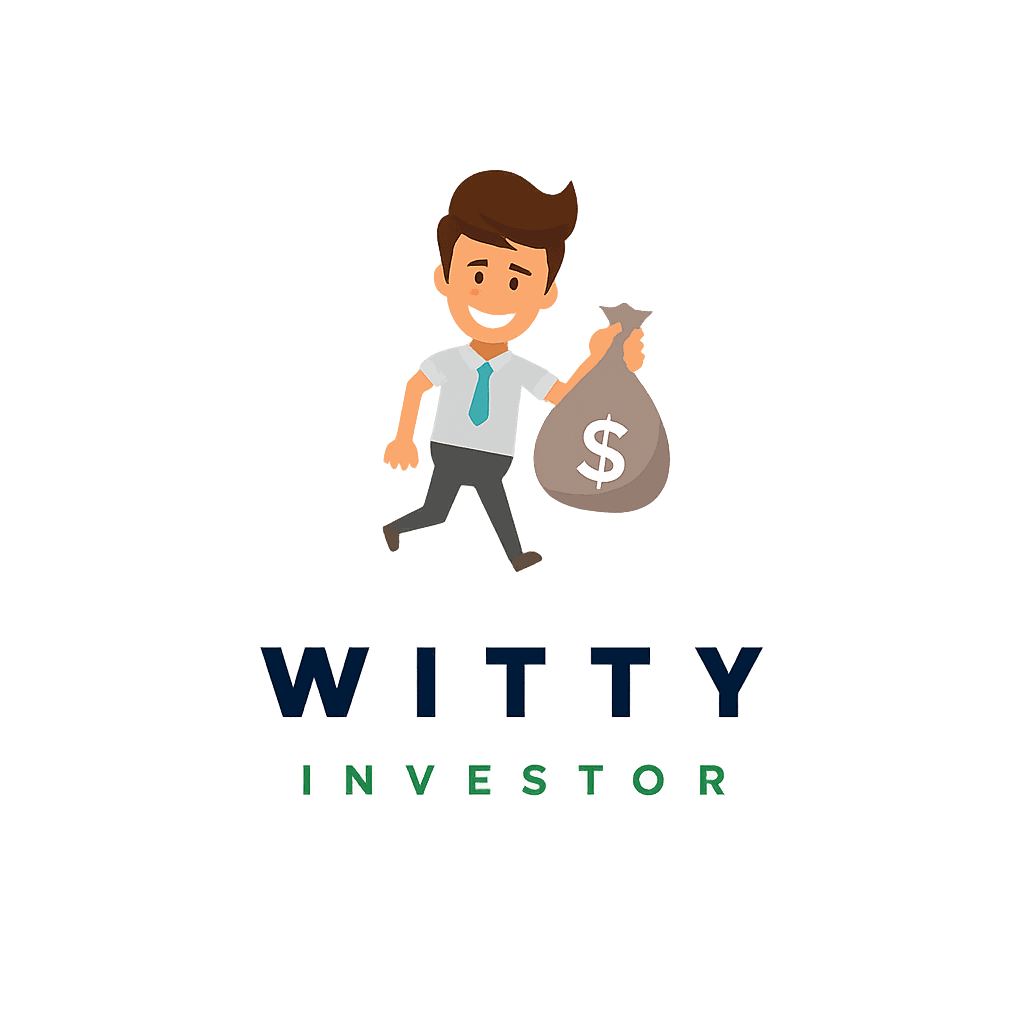AI‑Powered ESG Investing and DeFi Are the Breakout Trends for 2025
Welcome to the Wild West of 2025 Investing

The 2025 finance world feels like someone dumped the stock market into a blender with ChatGPT, TikTok traders, and a sprinkle of Elon Musk tweets. “Most traditional advice doesn’t even know what to do with this chaos. Here’s why most financial advice sucks—and what I actually recommend. AI is the bartender, DeFi is running an underground casino, and ESG is standing outside handing out pamphlets about saving the planet.
Markets are moving faster than a meme stock during a Reddit frenzy. In 2024 alone, AI-driven ETFs saw a 57% jump in assets, DeFi platforms handled $100 billion in locked value, and ESG funds (despite political backlash) still managed to hit $2.7 trillion globally. Love it or hate it, these trends aren’t just hot—they’re sizzling like bacon in a financial frying pan.
What Is DeFi (and Why Should You Care)?
DeFi (Decentralized Finance) is basically finance without the annoying middlemen—no banks, no bankers, no mysterious “processing fees.” Instead, DeFi uses blockchain technology and smart contracts to let people lend, borrow, trade, or earn interest directly from one another.
- Example: Want to earn 5% interest on your crypto? Instead of putting it in a bank (where they’ll pay you 0.01% and a side of disappointment), DeFi platforms like Aave or Compound let you lend it out and get a real return.
- The Risk: DeFi can be as safe as skydiving with a napkin parachute if you don’t know what you’re doing. Hacks in 2024 alone caused $1.7 billion in losses, I’ve made my own expensive mistakes (hello, losing $2,742 in 3 months), so trust me when I say DeFi requires homework. Which is a friendly reminder that high returns often come with high “Oh no, my money’s gone” moments.
In short: DeFi is like cutting out the middleman in a deal, but sometimes the “deal” decides to steal your wallet.
What Is ESG Investing (and Why People Fight About It)?

ESG (Environmental, Social, Governance) investing is like grading companies on whether they’re decent human beings. It measures:
- E (Environmental): Are they polluting the planet or working on sustainability?
- S (Social): Do they treat employees, customers, and communities with respect—or are they just cashing in?
- G (Governance): Do they have leaders who actually know what they’re doing and aren’t caught in scandals every other week?
- Example: Companies like Tesla get high ESG scores for pushing electric cars (good for the planet) but might get knocked down for other controversies (looking at you, Elon tweets).
- The Trend: ESG assets could hit $40 trillion globally by 2030, even though critics argue some companies “greenwash” their image just to score higher ratings.
In short: ESG is about investing with a conscience, but it’s also the finance world’s favorite political football.
DeFi vs. ESG: Which Trend Fits Your Portfolio?
Think of DeFi and ESG as two wildly different characters at an investment party:
- DeFi is the unpredictable genius—brilliant, edgy, but might ghost you with your money.
- ESG is the well-dressed moral compass—steady, socially conscious, and probably sipping organic tea while lecturing DeFi about ethics.
Here’s how they stack up:
| Category | DeFi (Decentralized Finance) | ESG (Environmental, Social, Governance) |
|---|---|---|
| Goal | Cut out banks and middlemen, offer higher yields | Invest in companies with ethical and sustainable practices |
| Risk Level | High – Hacks & scams cost DeFi users $1.7B in 2024 | Low to medium – ESG funds track stable companies |
| Returns | Potentially high (double-digit APYs are common) | Steady but moderate (ESG ETFs averaged 8-10% in 2024) |
| Accessibility | Requires crypto wallets and some blockchain knowledge | Easy – invest via ETFs or mutual funds |
| Popularity | DeFi holds $100B+ in locked value (2024) | ESG funds manage $2.7 trillion globally |
| Who It’s For | Risk-takers, tech geeks, “I YOLO my investments” crowd | Conscious investors who want money to do good |
Witty Takeaway:
- Want thrill and possible heartbreak? Go DeFi.
- Want to feel good about making money while saving the planet (or at least pretending to)? Go ESG.
- Or do both—because who says you can’t mix danger with a touch of virtue?
1. AI + ESG: Finance’s Power Couple
If you thought AI was just for writing emails that sound professional while you binge-watch Netflix, think again. AI is now analyzing stocks, predicting risk, and calculating ESG scores with terrifying accuracy (and zero coffee breaks).
- AI-Powered ESG Scoring: Companies like MSCI and Sustainalytics are now using AI models that crunch data from 5,000+ sources, including climate reports and social media, to decide if a company is a saint or a villain.
- The Money Trail: AI-powered funds outperformed traditional ESG funds by 3.2% in 2024, because unlike human fund managers, algorithms don’t panic when Elon Musk says something weird.
- Investor Interest: 74% of millennial investors say they’d rather invest in a company that’s “green and clean,” even if it means slightly lower returns. (Translation: They’ll skip a 10% ROI if the company uses compostable coffee cups.)
Witty Punchline: AI is like that overachieving friend who always knows the best stocks before you do, while you’re still Googling, “What is an ETF?”
2. DeFi Goes Mainstream (And Banks Are Sweating)

Decentralized Finance (DeFi) isn’t just a crypto nerd thing anymore—it’s a legitimate threat to banks. Platforms like Aave and Compound now manage billions in user funds, and DeFi lending grew 25% last year alone.
- The Appeal: Lower fees, instant transactions, and no “banker with a bad haircut” telling you your funds are on hold.
- The Risk: DeFi hacks in 2024 stole over $1.7 billion, proving that even the future of finance still needs a decent security system (or at least better passwords than “1234crypto”).
Witty Punchline: DeFi is like Uber for your money—super convenient, but don’t be surprised if the driver (or platform) disappears mid-trip with your wallet.
3. Private Credit: The Quiet Star of 2025

While everyone’s obsessing over AI and crypto, private credit funds quietly grew to a $1.7 trillion market in 2024. Why? Investors love the steady, juicy yields (often 8-10%) compared to the snooze-worthy 4% on most corporate bonds.
- Who’s Buying? Institutional investors, family offices, and that guy you know who “just invests for fun” but secretly has more cash than your local bank branch.
- The Play: Private credit ETFs and funds are expected to see another $300 billion inflow by 2026.
Witty Punchline: Private credit is like that underrated band you discover before they blow up. Except, in this case, they’re paying you double-digit returns to listen.
4. ESG: The Love-Hate Relationship
Everyone’s fighting about ESG (Environmental, Social, Governance) investing like it’s pineapple on pizza. But here’s the truth: global ESG assets are expected to hit $40 trillion by 2030, no matter what social media warriors scream about “woke investing.”
- Fun Stat: 1 in 3 dollars in U.S. professionally managed assets is in some form of ESG strategy.
- The Catch: Some ESG funds are all smoke and mirrors. In 2024, 40% of ESG-labeled funds were found to have questionable green credentials. (Translation: “We’re green because we recycled two emails.”)
Witty Punchline: ESG investing is like dating someone who says they’re vegan but eats chicken nuggets when no one’s watching.
5. Witty Investor’s 2025 Game Plan

This isn’t your grandma’s investing blog, unless she’s into sarcasm and hates boring financial advice. Here’s what you’ll see on The Witty Investor this year:
- “AI vs. Wall Street Analysts: Who’s Getting Fired First?”
- “DeFi vs. Banks: Who Gets the Last Laugh?”
- “ESG Funds That Don’t Just Pretend to Care About the Planet.”
We’ll break down the numbers, rip apart the hype, and tell you which trends are legit—and which are just financial clickbait.
Final Word: Stop Playing Dinosaur in a Jet Age
AI, ESG, DeFi, and private credit aren’t just buzzwords—they’re the engines rewriting tomorrow’s wealth playbook. You can either roll your eyes and cling to your dusty index funds like they’re your childhood Beanie Babies, or you can do the homework, lean in, and grab that 10% edge before the latecomers start crying about “what ifs.” The future isn’t waiting for your permission slip—so play smart, stay curious, and for the love of compounding, don’t be the financial fossil blaming “kids these days” for your flat returns.
Call to Action:
“Want more sarcastic but smart investing takes? Subscribe to The Witty Investor—because your money deserves better than another boring CNBC recap.”
Further Reading to Level Up Your 2025 Portfolio
- Why Your 401(k) Hates You (And How to Make It Love You Back)
- 5 Dividend Stocks That Pay You While You Sleep (Unlike Your Ex Who Just Drained You)
- Alphabet vs. Tesla Earnings: Who’s the Real Market Rockstar?
- I Lost $2,742 in 3 Months: My Dumbest Investing Mistake and What It Taught Me
- Why Most Financial Advice Sucks (And What I Actually Recommend)


